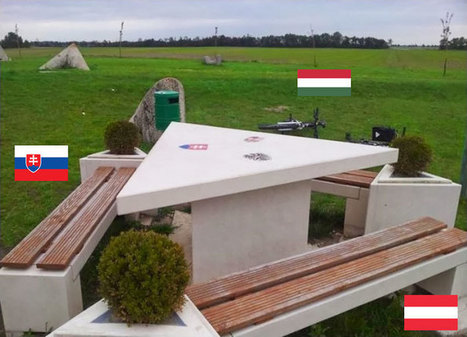"After four-plus years of fighting, Syria's war has killed at least hundreds of thousands of people and displaced millions. And, though it started as a civil war, it's become much more than that. It's a proxy war that has divided much of the Middle East, and has drawn in both Russia and the United States. To understand how Syria got to this place, it helps to start at the beginning and watch it unfold."

|
Scooped by Seth Dixon |
Stevie-Rae Wood's curator insight,
October 28, 2018 9:37 PM
The war in Syria has been devastating to Syrian's inhabitants. After six years of this conflict it has become a mess and is divided into four sections or groups, all backed different foreign backers. The backers have know become so confused on who there fighting for and what there fighting for, that is how messy this war has gotten. The use of chemical warfare has killed hundreds of thousands of people and displaced millions. As to why there is a major Syrian refugee crisis. The conflict started as an internal war against Assad and rebels. This small civil war has know turned into a global conflict. I wish I could say what foreign countries are backing who and why but the lines are very blurred and there has been many back stabbing. All these foreign powers entering this war has established Syria as a great power dispute. The Assad and rebels conflict also brew the other two sections that are fighting in this region the Kurds who want their own nation. The Kurds are the largest cultural and ethnic group without a country. The entrance of the Kurds in the fighting brought in more foreign countries to either support their efforts or squash the Kurds hopes of obtaining a nation of there own. Then you have ISIS who formed as a branch out of the original rebels because there was an internal dispute. Overall this war is bloody and will never end if all these four sections cant come to an agreement. If there is no determination for peace there will never be peace.
David Stiger's curator insight,
October 31, 2018 6:59 PM
Hearing about the news in Syria is usually tragic and frustrating. It is also equally confusing and this video helped to sort out its causes and important transformations over time. Even with the video's succinct explanation, the conflict is still a quagmire to understand. The fighting began during the 2011 Arab Spring when peaceful Syrian protesters were gunned down by Assad's military forces. Instead of backing down and caving into the violent repression, the Syrian civilians retaliated with small arms fire and were joined by Syrian army defectors. The now belligerent protesters formed their own rebel army, causing Syria to erupt into a civil war. Then Islamic extremists, including a terrorist groups, joined the rebels. Countries like Turkey and Jordan began funding and arming the rebels while Iran - a Shiite country - provided support to Assad. Appalled by the out-of-control death toll, the United States began training and arming the rebels - some of whom were from Al Qaeda! Assad's chemical weapons attack escalated U.S. involvement while Russia came to the side of Assad. Putin most likely supports Assad to maintain its lease of a key geographic asset - a warm-water naval base -while also discouraging internal rebellion. At some point a group of ethnic Kurds in northern Syria succeeded (Putin's fear) and began attacking Assad. But, Turkey started attacking the Kurds! Then in 2014 ISIS broke away from Al Qaeda and started attacking the Kurds and the rebels prompting the U.S. to redirect its focus away from the Assad regime. This has to be the messiest conflict in modern history and is entirely defined by proxy wars. Because the war is so convoluted and complicated, there is no end in sight. The relentless destruction over years has caused millions of refugees to flee to Europe because it is the closest stable place to Syria. This unprecedented wave of migrations will surely transform Europe and cripple Syria in the long run.

Corey Rogers's curator insight,
December 15, 2018 12:18 AM
Syria's war has gotten crazier and crazier and doesn't seem like there is a end in sight. The insane cross fighting between outside countries and the inner working of independence inside Syria itself is still an issue. A local protest has turned into an international fight against top countries of US and Russia.
Sign up to comment




 Your new post is loading...
Your new post is loading...








Over a year ago I posted a previous version of this video highlighting the complexities behind the Syrian war. Much has happened since then and this updated version adds more detail and includes a very helpful timeline to show how more internal and external forces became involved in the fighting. This is an incredibly complicated geopolitical situation because of all the regional and international players involved.
Tags: Syria, war, conflict, political, geopolitics.